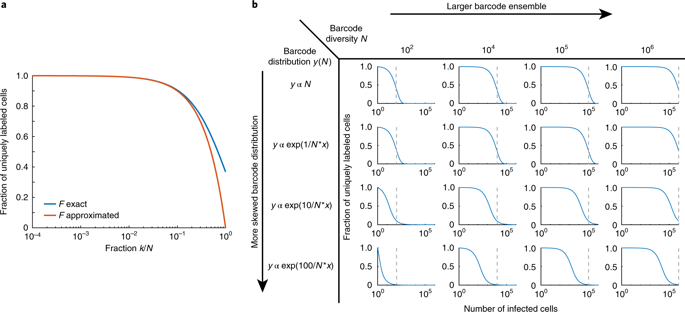Nature Methods ( IF 36.1 ) Pub Date : 2018-10-30 , DOI: 10.1038/s41592-018-0185-x Justus M. Kebschull , Anthony M. Zador

|
Cellular barcoding is a technique in which individual cells are labeled with unique nucleic acid sequences, termed barcodes, so that they can be tracked through space and time. Cellular barcoding can be used to track millions of cells in parallel, and thus is an efficient approach for investigating heterogeneous populations of cells. Over the past 25 years, cellular barcoding has been used for fate mapping, lineage tracing and high-throughput screening, and has led to important insights into developmental biology and gene function. Driven by plummeting sequencing costs and the power of synthetic biology, barcoding is now expanding beyond traditional applications and into diverse fields such as neuroanatomy and the recording of cellular activity. In this review, we discuss the fundamental principles of cellular barcoding, including the underlying mathematics, and its applications in both new and established fields.
中文翻译:

蜂窝条形码:沿袭追踪,筛选及其他
细胞条形码是一种技术,其中单个细胞用独特的核酸序列(称为条形码)标记,以便可以在空间和时间上跟踪它们。细胞条形码可用于并行跟踪数百万个细胞,因此是研究异质细胞群体的有效方法。在过去的25年中,细胞条形码已用于命运定位,谱系追踪和高通量筛选,并已导致对发育生物学和基因功能的重要见解。在急剧下降的测序成本和合成生物学的力量推动下,条形码现在已从传统应用扩展到了神经解剖学和细胞活性记录等各种领域。在这篇评论中,我们讨论了蜂窝条形码的基本原理,









































 京公网安备 11010802027423号
京公网安备 11010802027423号